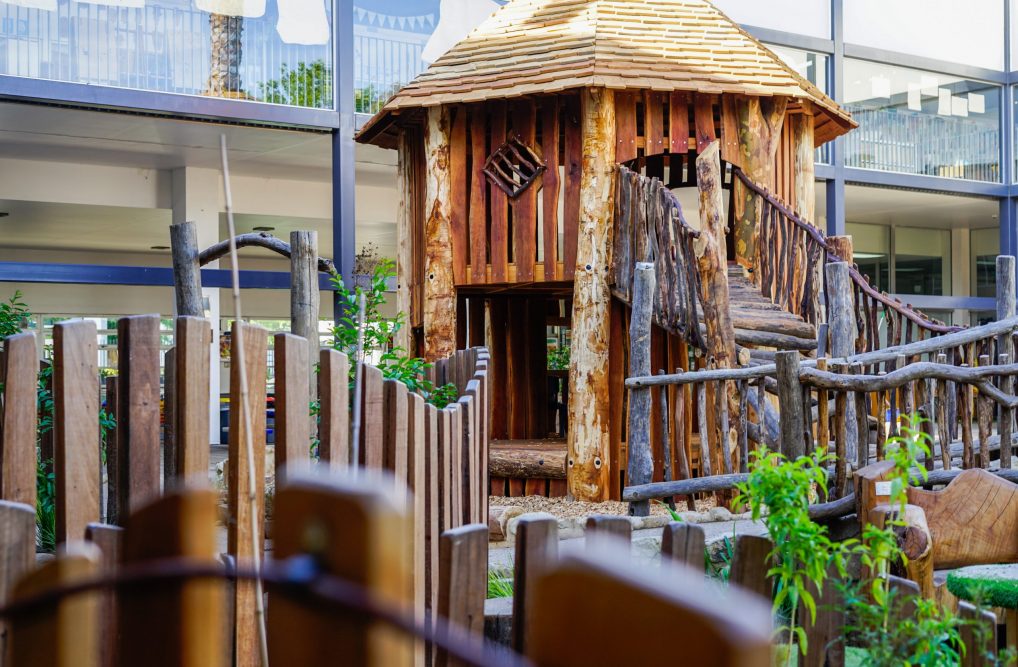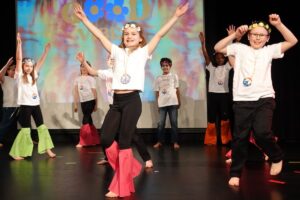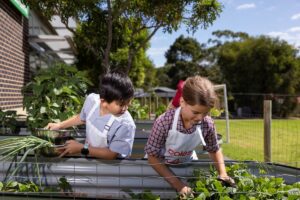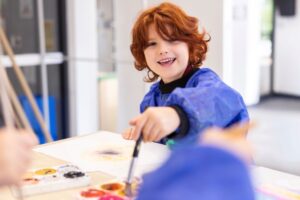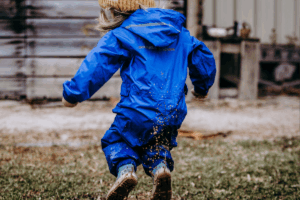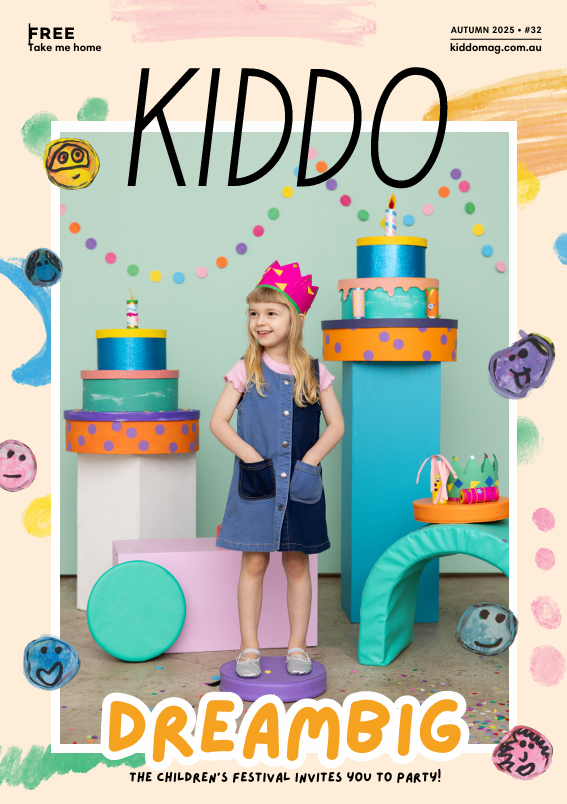We now know and understand the importance of time spent in nature for a child’s mental wellbeing, that green spaces make us happier. Risk-taking comes hand in hand with playing in nature so children are learning about the limits of their bodies and their surroundings, and how to keep themselves safe in the world.
Simon from Climbing Tree Creations’ philosophies around creating nature play spaces speak to a true passion for the art and importance of creating these small outdoor worlds for our children to explore. We talked to him about valuing the importance of childhood and the meaningfulness of play, and how he and his team bring this vision to life.
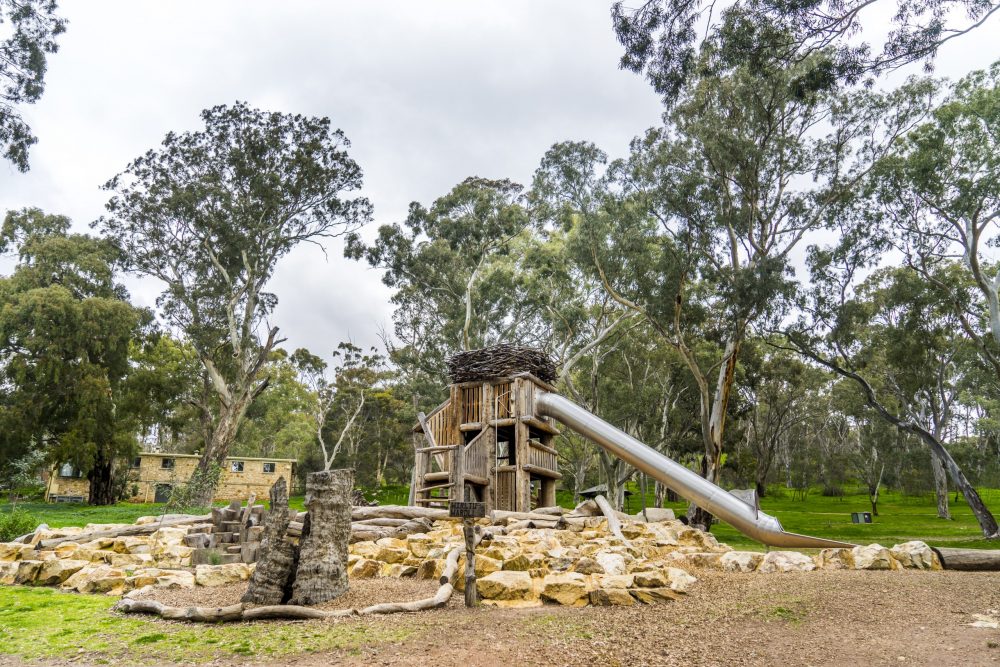
What is your philosophy on nature play in schools?
My experience as an educator, and even my own experiences as a student is what prompted the start of Climbing Tree. As a student, learning in a classroom environment did not come easy for me, so when years later I became a primary school teacher, I really resonated with the students in my class who were quite literally bouncing off the walls. I could see that the classroom environment was not bringing out their strengths, so I took the classroom outdoors!
Whilst we are fortunate in Australia to have space and greenery in our school yards (in comparison to my years teaching in London), I found they were less than inspiring, that students craved more, that they deserved more.
I can’t tell you the number of times we have run events and incursions where children who are considered disruptive, unengaged, uninterested in the classroom are suddenly occupied for hours, working together with their peers, communicating their needs, exploring, experimenting, enjoying learning!
We will always advocate for getting outdoors, exploring your own naturehood, however the reduced opportunities children have available to interact with their local natural environments coupled with the amount of time in their day dedicated to structured lessons and activities has increased the need for us to consider Nature Play opportunities in schools. Children need nature, for their wellbeing, for their physical and mental development, it provides opportunities for learning about the world around them, about themselves and offers an opportunity to get creative, to explore risk and how to keep themselves safe.
A good nature play space will not only allow for these opportunities but can also provide a space for outdoor learning in more structured lessons. There is nothing that can’t be taught through the outdoor environment. It just takes the right setting and some creative teaching!
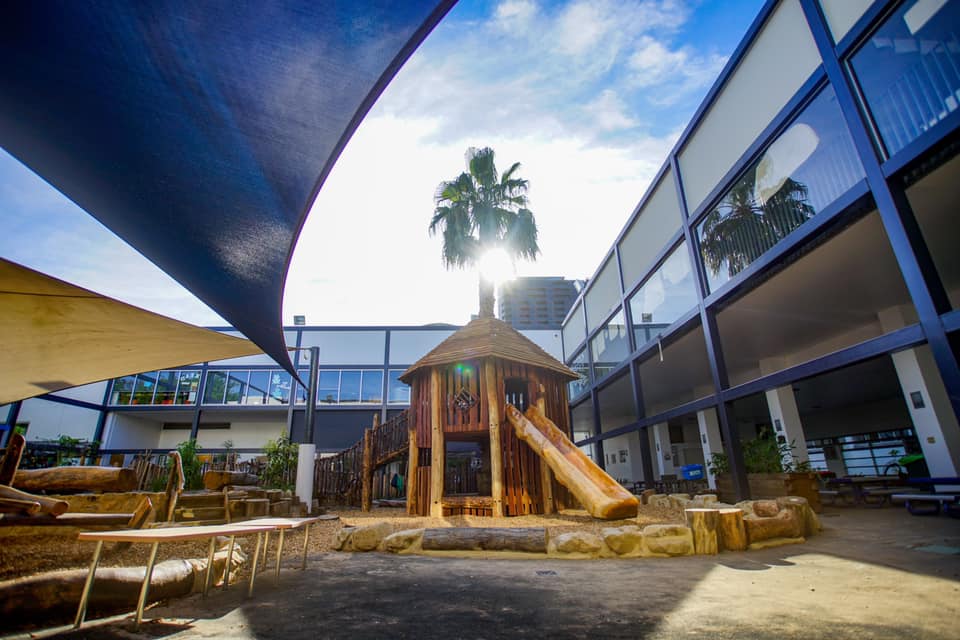
As we began this year in SA with the first cohort of year 7’s attending public High School’s (our eldest included!) and we look at the spaces available to students in a high school yard, it does emphasise to us that there is still a way to go, there is still this idea that older children no longer want or need places to play. We are thankfully seeing this change, we are always emphasising that nature play is not just important for the younger kids in the throes of huge gross motor development, the benefits extend to high schoolers through to adults! We hope to see a lot more greenery and trees planted and maybe a parkour build or two!
How have the trends in play spaces changed over time?
It is interesting to look at play spaces over time. I often speak about the pre 80’s time of monkey bars over asphalt and crazy spinning and rocking metal structures where the risk of injury was pretty high! But man, they were fun! The 80’s from what I can gather was the age of perma pine, the green-tinged timber that we cannot use now as it contains arsenic, but these were great and it was the time they started to consider the surface that children fell onto might need to absorb some energy to stop so many broken bones. These in my opinion were a great balance of risk and compliance. They were often constructed by an enthusiastic group of parents and maybe led by a retired carpenter with the hopes of increasing their status as the cool grandparent. These were different and interesting and were often placed next to an old tractor or train that was the best fun to explore and pretend on!
There are still some relics of these around in little country towns and I always enjoy exploring these, though sometimes have to take my Playground Auditor hat off!
I am not sure when we went wrong but at some stage after this ‘perma-pine age’ adults decided that we needed to remove all risk (and a whole lot of fun) from playgrounds. We started to see generic off the shelf plastic and steel play spaces set within a sea of rubber matting and caged in a pool fence! Safe maybe (although children will always test the boundaries and find risk where they can) but engaging? Interesting? Not always.
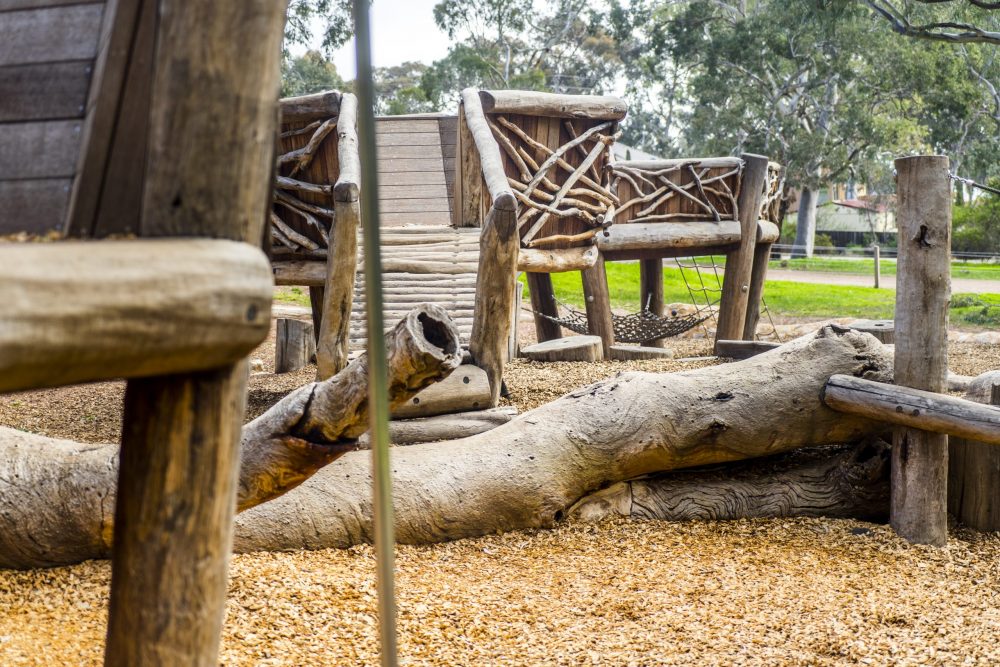
Since Climbing Tree was founded 10 years ago we have seen a movement towards the use of timber and natural materials and play spaces have begun to look a little different and reflect their users’ needs and the natural environment they sit within. We have seen playground standards change to reflect the research that suggests a healthy dose of risk is important to children’s development.
As a company the movement to more naturally inspired playgrounds has afforded us opportunity to create spaces with caves, giant nests, treehouses, shipwrecks, and secret hiding spaces. We have planted thousands of trees with students in their schools and run hundreds of play sessions involving mud, sticks and junk loose parts! I believe we are finding a healthy and fun middle-ground.
What kind of developmental benefits does natural play have for children?
Playing in nature has a variety of benefits, there is a ton of research highlighting the importance of playing in nature to children’s physical, mental, emotional development. Richard Louv’s book Last Child in the Wood was an eyeopener for many people, he coined the term Nature-Deficit Disorder, putting into words what was being seen and felt by educators in the classroom.
Nature play supports the development of cognitive skills such as executive function, and the open-endedness of nature play offers opportunity to develop creativity and encourages social development. We need to get away from this idea that spending time outdoors is taking away from the ‘real learning’ that occurs at a classroom desk. This is the real learning.
You develop standalone play space products, custom built, can you tell us about some of your favourite creations?
Our bespoke play spaces are all so different and have their own story and interesting elements so this question feels like being asked to pick a favourite child!
Mukanthi Playground at Morialta National Park will always be special to me because it was such a big jump for SA towards nature play spaces, it was an opportunity to truly incorporate the natural surroundings in amongst a play space and have Kaurna cultural and artistic provocations placed throughout the space to amplify the wonder.
If I had to pick a favourite it would probably be the World Heritage Site Naracoorte Caves ‘Fossil Hunters Playground’, here we were able to create a sinkhole with rammed earth in layers to represent how the fossils were created in the caves below. It has four caves leading to the sink hole for children to get lost in. We worked with a local Boandik Elder to theme each garden bed to represent one of the six seasons, incorporating carvings of local totem animals throughout.
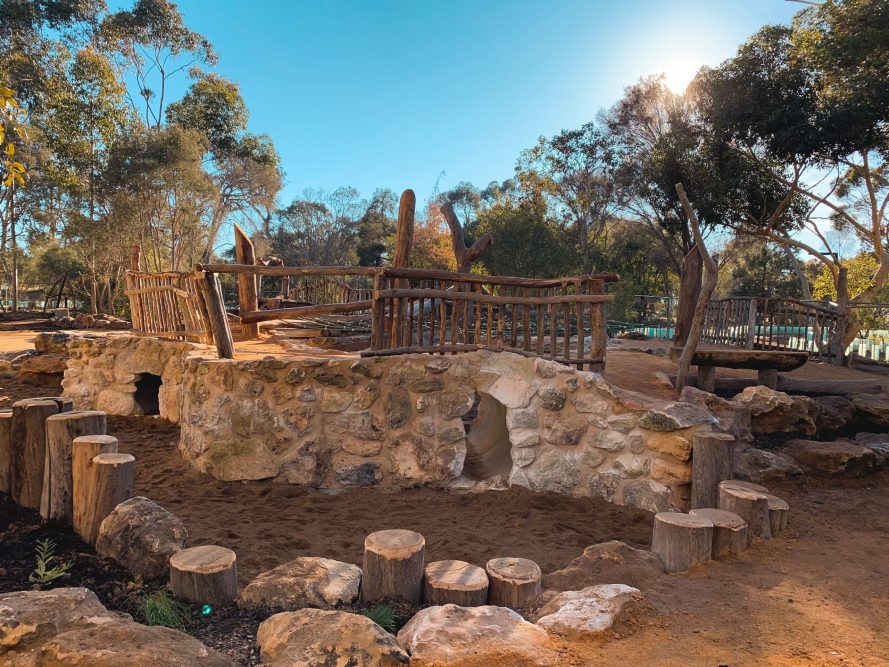
Since then, we have created treehouses, crystal caves, giant hollow fairy logs and shipwrecks. It is always so exciting to do consultation with students to see what excites them and what they can dream up for us to create.
Climbing Tree engages with children right through the design to construction process – this must be a great starting point for some creative ideas!?
Young people will always cook up the craziest ideas! From the first design until now, almost ten years down the track, the most enjoyable and valuable part of the design and construct process is the discussions and workshops with students. It is amazing where a design will end up if you listen intently without preconceived ideas. The students’ ideas combined with site constraints and considerations about the surrounding environment always creates something of a challenge but something that is ultimately really unique and special.
The other amazing part of our work is the moment you open the play space to the students and their excitement seeing their crazy ideas come to life! This moment always makes all the hard work to deliver these custom pieces worthwhile – unfortunately many of our teams are straight into the next playspace-creating adventure and miss this moment, when they do catch it, it is always a heart-warming talking point.
Indigenous connections are important to your design and construction process. Can you talk to us about how you have brought deeper meaning to some of your projects through this connection with our First Nations Peoples?
Climbing Tree was founded on Kaurna land, although we have constructed playspaces much further afield from Ngarungga and Ndajuri Country to Boandik Country even as far as Arrente Country. As a company we are in a constant process of learning (and unlearning!), connection to nature is a huge part of our philosophy and it is important to recognise the importance of First Nations people’s interconnection to land, the reciprocal relationship is part of their cultural identity, we can learn so much from the longest living culture in the world.
In our consultations we ask questions and spark discussions around the site’s connections with First Nations peoples and their culture, language and stories. We seek to place provocations throughout many of our playspaces to spark interest and wonder, we are conscious of tokenism, Indigenous elements in playspaces should have meaning and should always be in collaboration with First Nations people. We are lucky to call some very talented Aboriginal artists our friends and colleagues, who have had invaluable input into contributing to the process and end-product of many of our playspaces.
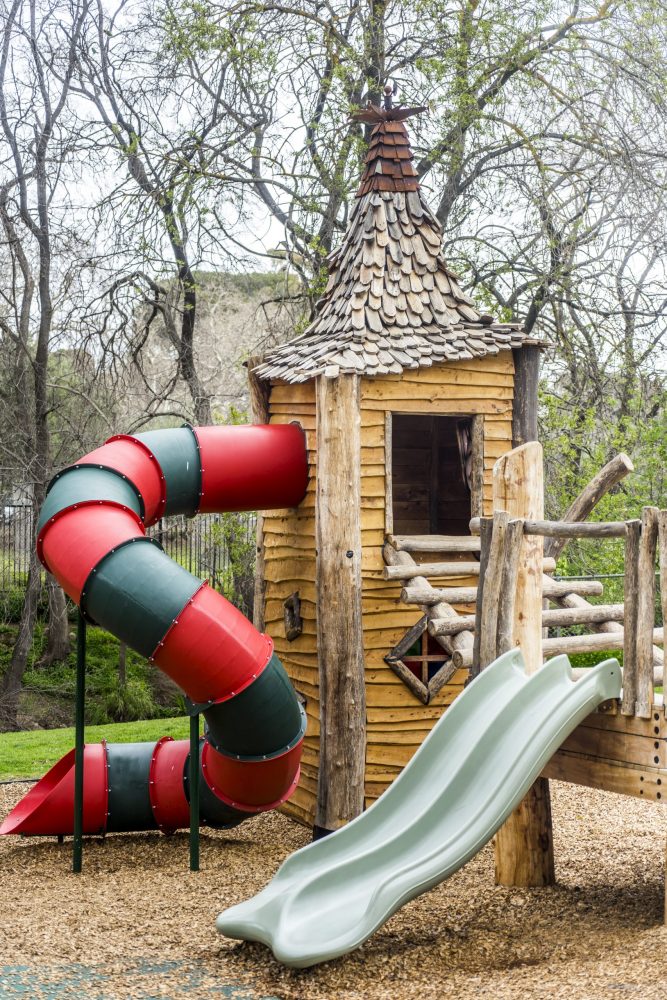
The process of the actual build of natural play spaces must evolve as it goes along. Have any of your projects significantly changed from start through to finish just due to the changeable nature of natural elements?
We are a unique company in that we both design and construct playspaces, we have this amazing opportunity to be flexible in our constructions and modify the builds as they evolve. Often the teams onsite will get a great idea based on the appearance of a piece of timber available and they will change the design to honour this. One that comes to mind is our playspace at Bowman park just outside of Crystal Brook where a fallen branch on the job site resembled the body of a Praying Mantis arching up. So, it was decided that night over our fire-cooked stew that in the morning the scramble would morph into a giant praying Mantis leading to the tree house!
